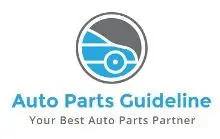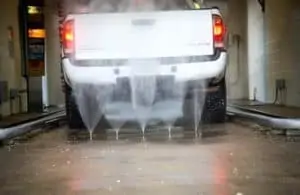As soon as you buy a secondhand car, or are thinking of extending the life of your old car, you must learn some hacks and tips that might come in handy.
This article will guide you through the important process of restoring your old car to its former glory.
8 Ways To Improve Your Old Car’s Performance
1. Clean Your Car’s Exhaust System
Cleaning your car’s exhaust system will allow you to eliminate filth and dirt from your engine, allowing it to run optimally.
Lots of used cars fail in this specific part of maintenance, which is exactly why it’s crucial to consult a technician who can assist you in case you can’t do it yourself.
If you’re upgrading the air filtering, you might as well replace the spark plugs. Replacing both the air filtration system.
And the spark plugs is easier than you think because all you have to do is disconnect the old ones and plug in the new ones.
2. Replace The Timing Belt
This ensures that your engine runs effortlessly by synchronizing the crankshaft as well as the camshaft.
All of the components in the engine will stop moving the moment the motor is turned off, and any saved kinetic electricity will quickly dissipate.
As a direct result of the broken or bent crankshaft, bent regulators, as well as a damaged cylinder head, your engine will need to be changed.
You also have to change your timing belt every 60 to 100 thousand miles. Check the car’s manual to learn more.
But if you’re still shopping around for a car, you can check out used vehicles here. Getting a good secondhand car will reduce the amount you’ll have to spend on complex restoration jobs.
3. Inspect The Tires
If you have been driving for some time, then you probably know that the quality of your tires contributes a great deal to the general quality of the driving experience.
That also will mean that in improving your old or secondhand car, you should not forget to check if the tires need replacement.
The tires on a car have to be examined very carefully because they are the vehicle’s only point of contact with the ground. In case your tires are worn, they will lose traction, causing the car to lose traction as well.
This can have a negative impact on your automobile’s balance and might even cause serious accidents. It’s a great plan to examine your tire pressure at least once a week.
You can do some research and read about the basics of checking a vehicle’s tires in case you’re not knowledgeable in that aspect. This will save you time and money in the long run.
4. Get Your Car Properly Aligned
Having your car aligned has numerous advantages. The alignment can boost the car’s overall performance while making it safer to drive.
The traction between the road and the tires will be developed when the car is aligned. Moreover, the tires won’t wear out as quickly.
You’ll also need to align your tires when you notice that your car drifts inconsistently to the side while driving.
Your tires won’t last long if the weight of your car is not evenly distributed on the tires. A properly aligned vehicle will give you a less risky ride.
Doing this can also improve the responsiveness of your steering wheel. This is especially true when you turn a corner or hit the brakes.
5. Replace Your Thermostat
Replace your thermostat with a 180-degree one since they perform better and keep the engine at a more constant temperature.
If you’re looking for a model equipped with this thermostat, know that most new cars have them.
You may also get electric cooling fan components kits from repair shops to replace any old parts (e.g., fan relay, AC condenser, power cables, etc.).
Most fan relays cost less than USD$20 and maybe replaced in a matter of minutes.
New condensers may be purchased for as low as USD$60 with a lifetime warranty, but you must know the right size in order to get the right replacement.
Depending on how old your car is, you may need to do all of the steps enumerated in this article, or only parts of it if the whole system is not problematic.
6. Get Your Battery Replaced
Keep a close eye on your vehicle’s battery. You’ll likely need to change your battery if it’s been over three years since you last changed it.
When you start to notice that your car’s engine is taking longer than normal to start, or when the headlights don’t dim as much when you turn on the headlight switch, you may have to change the battery.
In case you have other battery-related issues or some unnoticeable concerns with your old car, it is high time to have it examined.
This will help you determine whether it’s still in good shape and able to run safely and smoothly given its mileage.
7. Examine Your Car’s Air Intake System
It’s important to leave no stone unturned with regards to restoring your vehicle to an excellent condition.
In case you don’t know how to examine your car’s air intake system, a car mechanic or perhaps an auto parts store would gladly help.
8. Check Your Radiator And Hoses
It’s important to keep your radiator and hoses in excellent working order if you live in a cold climate since the coolants in all cars tend to harden when it’s too cold outside.
This can help prevent further damage, and it’s also safer than driving without any heat at all.
Conclusion
While you won’t be able to make your car brand new again, you may restore it to some of its former brilliance.
This is true whether you’re thinking about giving your old car a makeover or purchasing a decent used one that only needs a few minor adjustments before it can operate properly.
Just because your car has high mileage doesn’t mean it has to function poorly; you may apply the given tips in this article or hire a professional to assist you with the repairs.



![Read more about the article 6 Common Dirty Throttle Body Symptoms [Solve It By Yourself]](https://autopartsguideline.com/wp-content/uploads/2017/07/Dirty-Throttle-Body-Symptoms-300x166.webp)